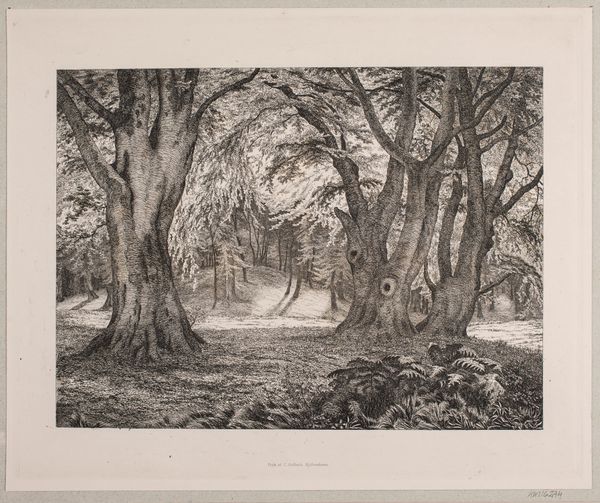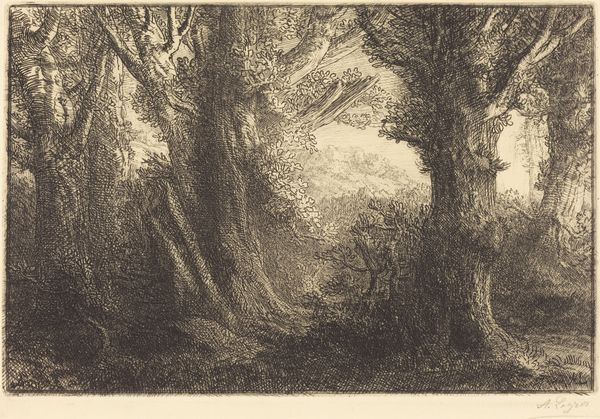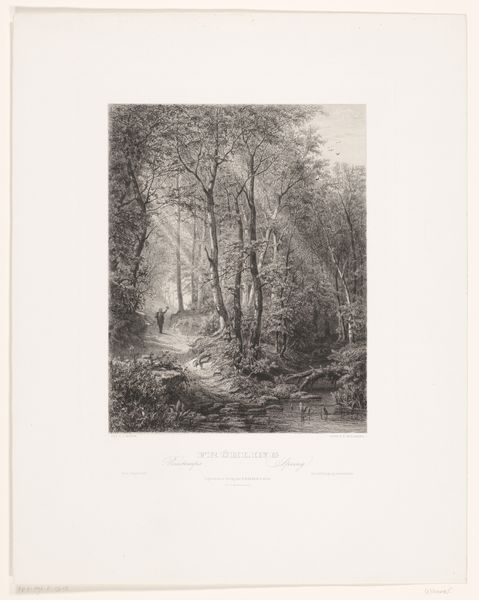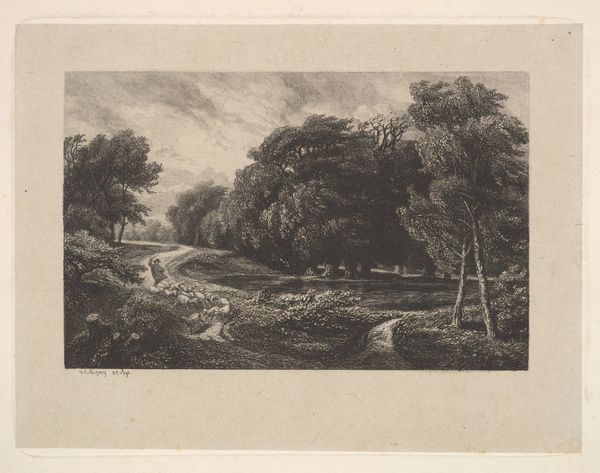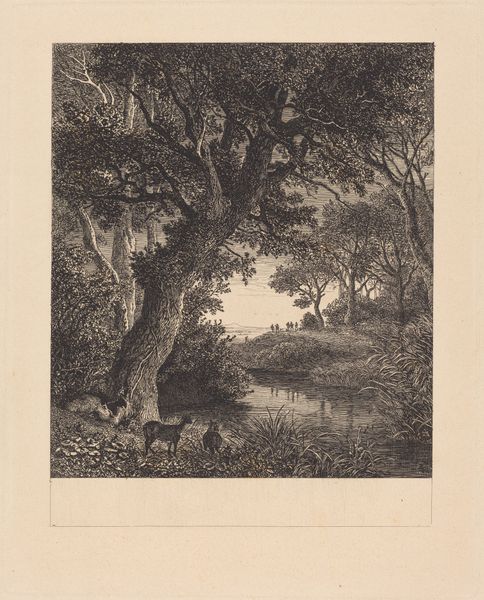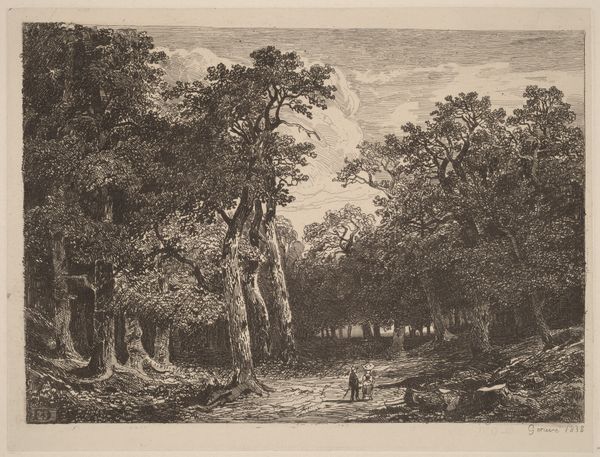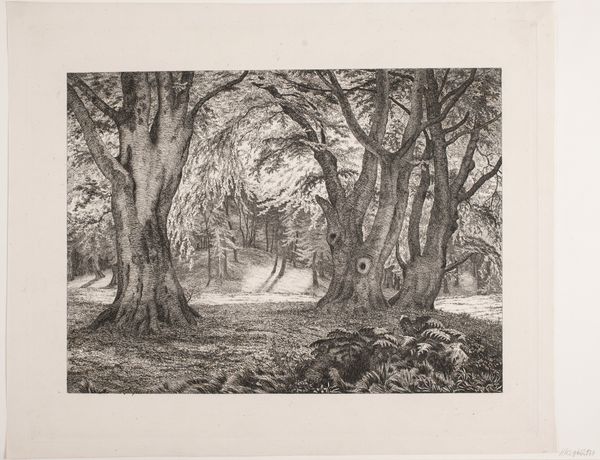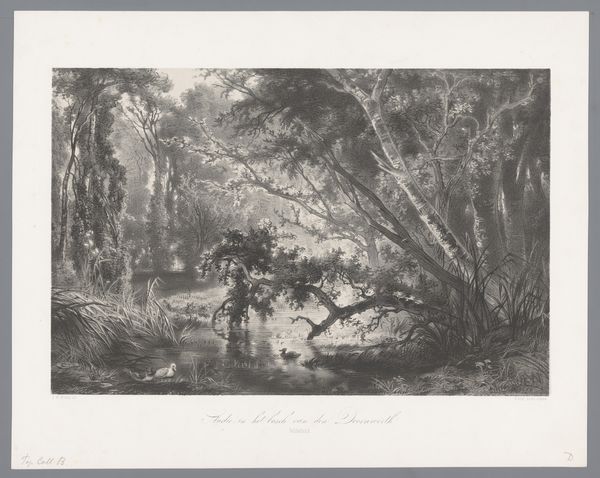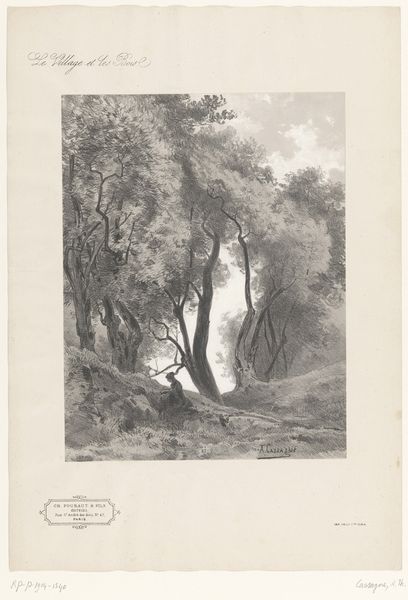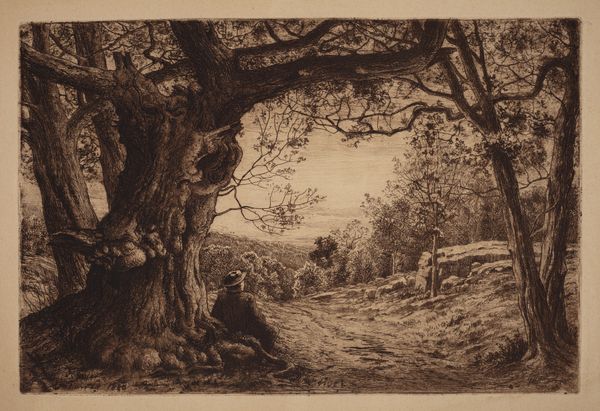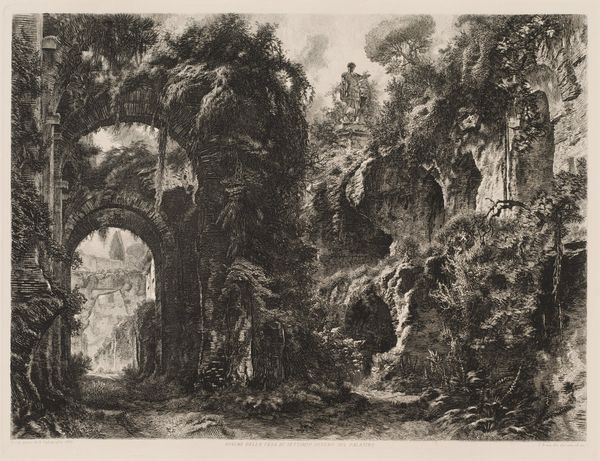
print, etching
# print
#
etching
#
landscape
#
romanticism
#
realism
Dimensions: plate: 28.6 x 37.1 cm (11 1/4 x 14 5/8 in.) sheet: 35 x 44.4 cm (13 3/4 x 17 1/2 in.)
Copyright: National Gallery of Art: CC0 1.0
Editor: Here we have Paul Huet's "L'Ile Séguin in Flood," an etching from 1833. I'm really struck by the darkness and density of the trees – it's almost claustrophobic, and certainly not the pretty picturesque landscape I was expecting. How should we interpret this, in terms of what it might be saying? Curator: That initial reaction is spot-on. It disrupts traditional romanticism by acknowledging a darker side to nature, maybe even gesturing towards the idea of nature's indifference to humanity. Think about the social upheaval happening at the time. Does this piece perhaps reflect anxieties about industrialization encroaching upon the natural world, the flooding a symbolic erasure? Editor: That's fascinating. I hadn’t thought of the flooding as a potential symbol of industrialization. So, rather than celebrating nature, is Huet actually using it to comment on the instability of society? Curator: Precisely! And notice the level of detail given to the plantlife on the left compared to the distant and almost featureless water on the right. What statement is Huet making through these aesthetic decisions? The piece creates a dialogue, positioning the personal encounter with wild nature, full of complexity and texture, against the featureless landscape, devoid of detail. Perhaps he implies how easily nature will be made 'empty' if industry is permitted free reign? Editor: So, by emphasizing certain elements and downplaying others, Huet directs our attention to the cost of so-called progress and makes nature into a character with its own, perhaps fading, story. Curator: Exactly. And remembering that this is an etching – a medium accessible to a wider audience – underlines its potential to be a powerful piece of social commentary. It makes you consider how artists at the time were responding to pressing issues, using the landscape itself as a battleground. Editor: I'll definitely view landscape art with new eyes. Thanks so much!
Comments
No comments
Be the first to comment and join the conversation on the ultimate creative platform.
